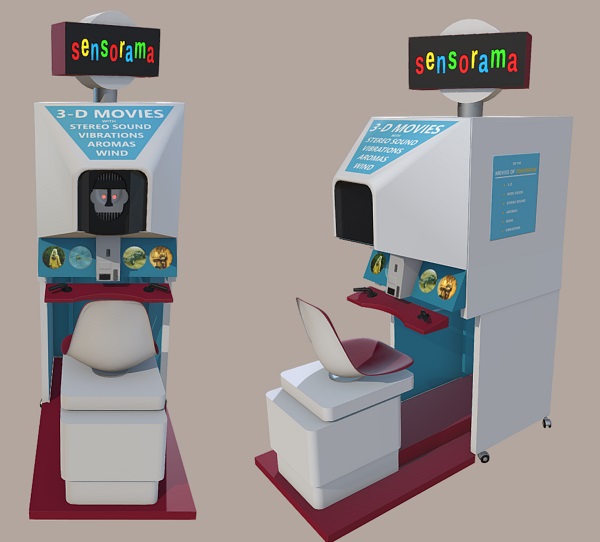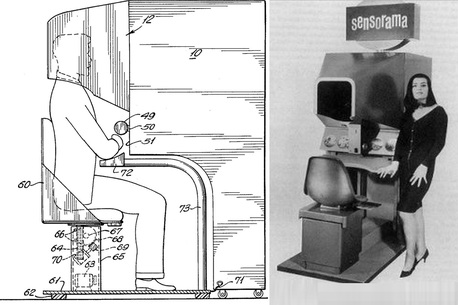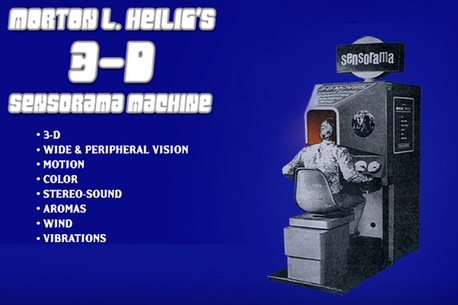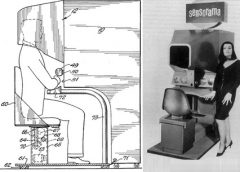
HMD Origins: The Sensorama was a machine that is one of the earliest known examples of immersive, multi-sensory (now known as multimodal) technology. This technology, which was introduced in 1962 by Morton Heilig, is considered one of the earliest virtual reality (VR) systems. Heilig, who today would be thought of as a “multimedia” specialist, in the 1950s saw theatre as an activity that could encompass all the senses in an effective manner, thus drawing the viewer into the onscreen activity. He dubbed it “Experience Theater”, and detailed his vision of multi-sensory theatre in a 1955 paper, “The Cinema of the Future” (Robinett 1994). In 1962 he built a prototype of his vision, dubbed the Sensorama, along with five short films for it to display.
Name: Sensorama
Maker: Morton Leonard Heilig
Released: 1962
Type: Video Powered
Display: 3-D CRT display
Field of View(FOV): 40°
Refresh Rate: 25 Hz
Launch Price: Never Sold To Public
Weight: Unknown (Sit Down Cabinet)

Features: The Sensorama was a mechanical device, which includes a stereoscopic colour display, fans, odour emitters, a stereo‐sound system, and a motional chair. It simulated a motorcycle ride through New York and created the experience by having the spectator sit in an imaginary motorcycle while experiencing the street through the screen, fan-generated wind, and the simulated noise and smell of the city. These elements are triggered at the appropriate time such as the case of the release of the exhaust chemicals when a rider approached a bus. The petrol fumes and the smell of pizza snack bars were recreated by chemicals. While the machine still functions today, audiences cannot interact with it or that it cannot respond based on the user’s actions.

Invented in the late 1970’s Sensorama was one of the very first virtual reality machines ever made, and it wasn’t even called a VR machine, it was called a “sensorama machine.” but strangely it had more features than many modern virtual reality machines. It had vibration feedback, real wind for the sensation of movement and believe it or not smell-o-vision aromas!
